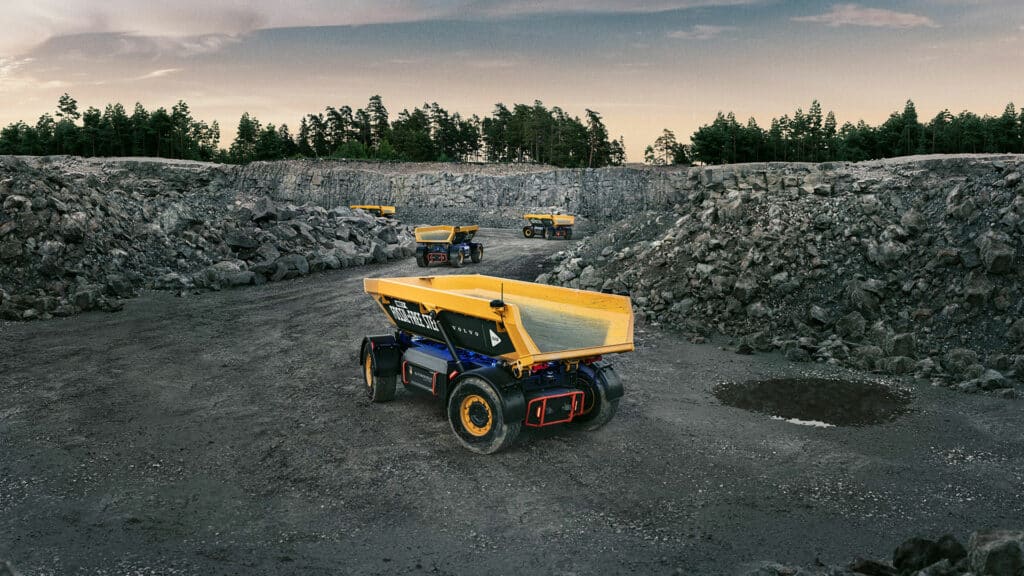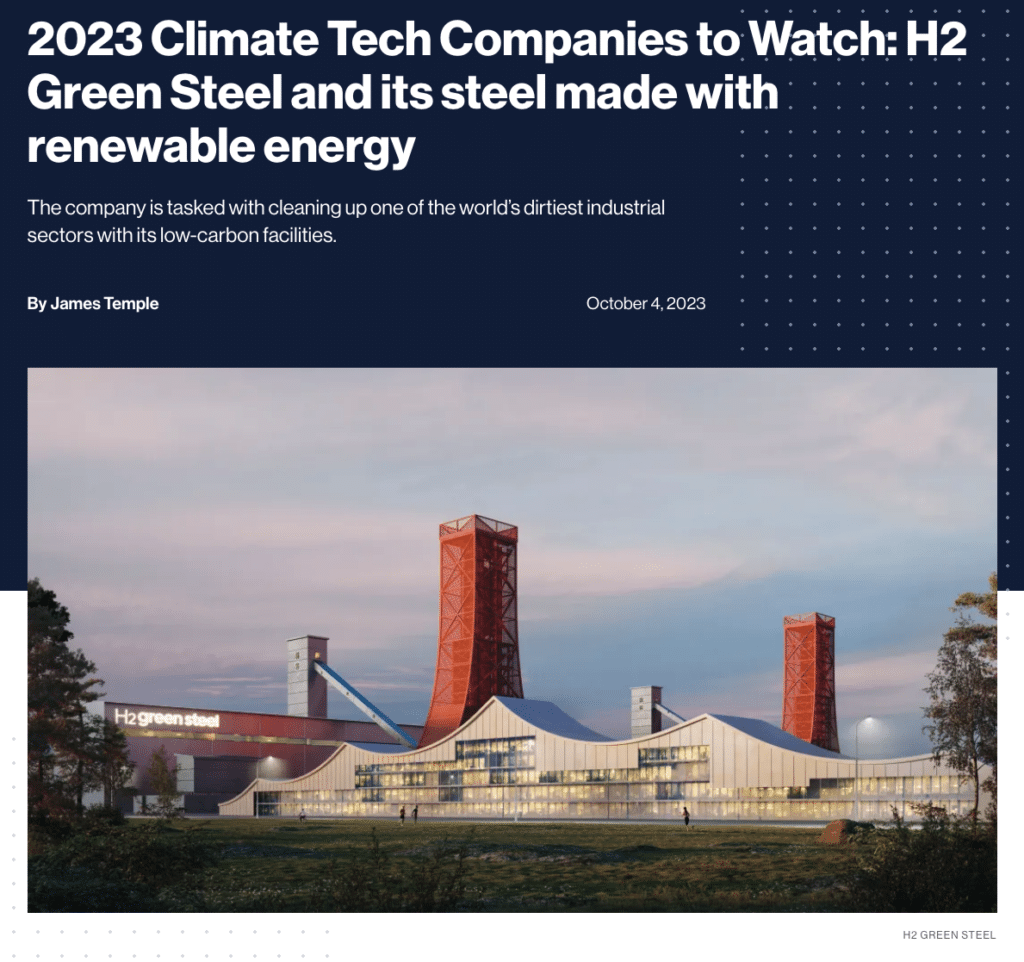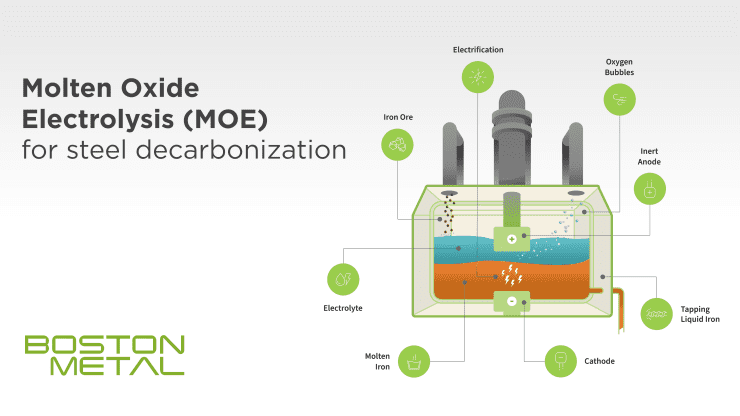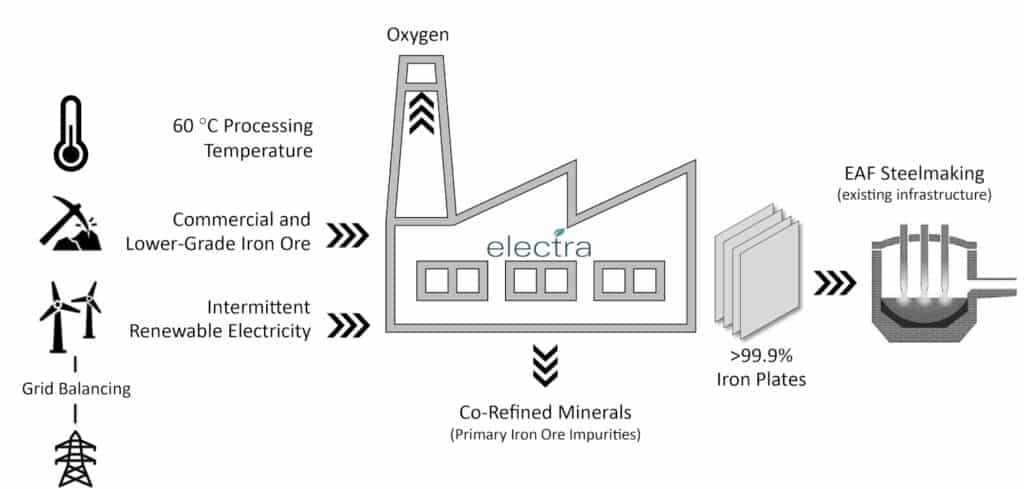It might not look like much, but the world’s first fossil free steel being used to create a truck at Volvo AB is a start. A collaboration between the Swedish steel maker SSAB, iron ore mining company LKAB and energy company Vattenfall is a game changer to a more sustainable steel production. Every ton of steel emits on average 1.85 tons of carbon dioxide, equating to about 8% of global CO2 emissions.
In the second part of my series on sustainable production materials, I am taking a closer look at steel. The response on my blog about cement has been overwhelming and I hope that you enjoy this deep dive into steel just as much.
From how steel is made to the impact of green hydrogen, I will try my best to give a brief overview and hopefully inspire you to follow greener production processes too. But first, we have to take a brief step back in time to the origin of steel…
A little history of iron and steel
Egypt, China, India, Japan and Sri Lanka all have 1 thing in common: they have traces to the earliest creation of steel.
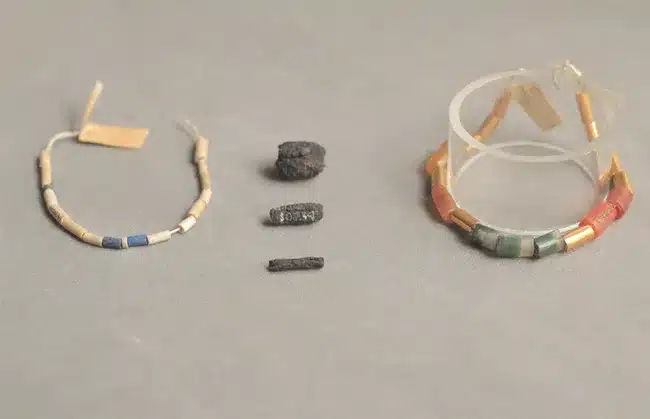
It all started with iron in Egypt: “the oldest known iron artifacts are nine tubular Egyptian beads made from meteoritic iron (characterized by large crystal grain size and high nickel content), and reliably dated to about 3200 BCE (Rehren et al., 2013).”1 Early smelting activities range from the Middle Senegal Valley into the Nile Valley and were mostly done in small clay or stone lined pits with temperatures reaching up top 1200°C and produced so called bloomery iron.
China on the other hand pioneered liquid iron production. Iron casts date back to the Spring and Autumn Period (770–473 BCE), and smelting of relatively large quantities of liquid iron in fairly large furnaces is well documented during the Han dynasty (207 BCE–220 CE). In Europe, Sweden and the Rhine Valley show early developments of iron blast furnaces as late back as 1150 CE.
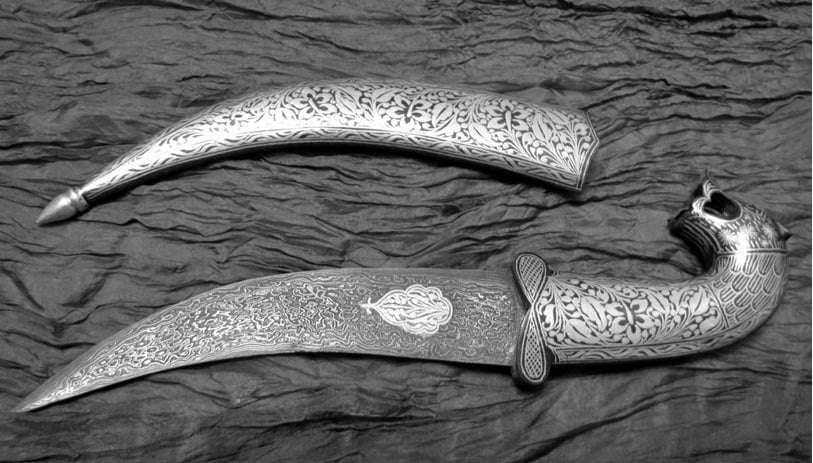
The first form of steel however came from another location: despite the famous Damascus steel blades being forged in Syria, the steel for it came from India and Sri Lanka. What is known as Wotz steel, dates back to around 300BCE and is a classic case of terrible translation: it derives from the word “utsa” for fountain or “ukku/uruku”.
In Japan (another location with famous steel swords) the tatara appears around 710CE during the Nara period. This special furnace allowed for high temperatures to produce steel.
It is impossible to pinpoint how steel was exactly “invented”, but it can be assumed that early blacksmiths must have identified the benefits of introducing carbon to iron, after leaving it in the furnaces longer.
Around 1700CE, Sweden and Russia emerged as the main manufacturers of iron and contributed to a growing trade in Europe. Advances in technology lead to the introduction of coke as a replacement of coal in furnaces and allowed for a lower cost iron production with higher iron yields.
The iron production created the term “pig iron”, which is still in use today. The name originating from the iron moulds resembling a litter of sucking pigs.
It would take until August 1856CE for Henry Bessemer to establish a scalable process of steelmaking. His innovation was very short lived as the speed of innovation of furnaces already produced new open hearths designs in the late 1860s. Steel took over as the primary ore from iron shortly thereafter.
Below is a nice overview of how steel production changed in the last 50+ years:
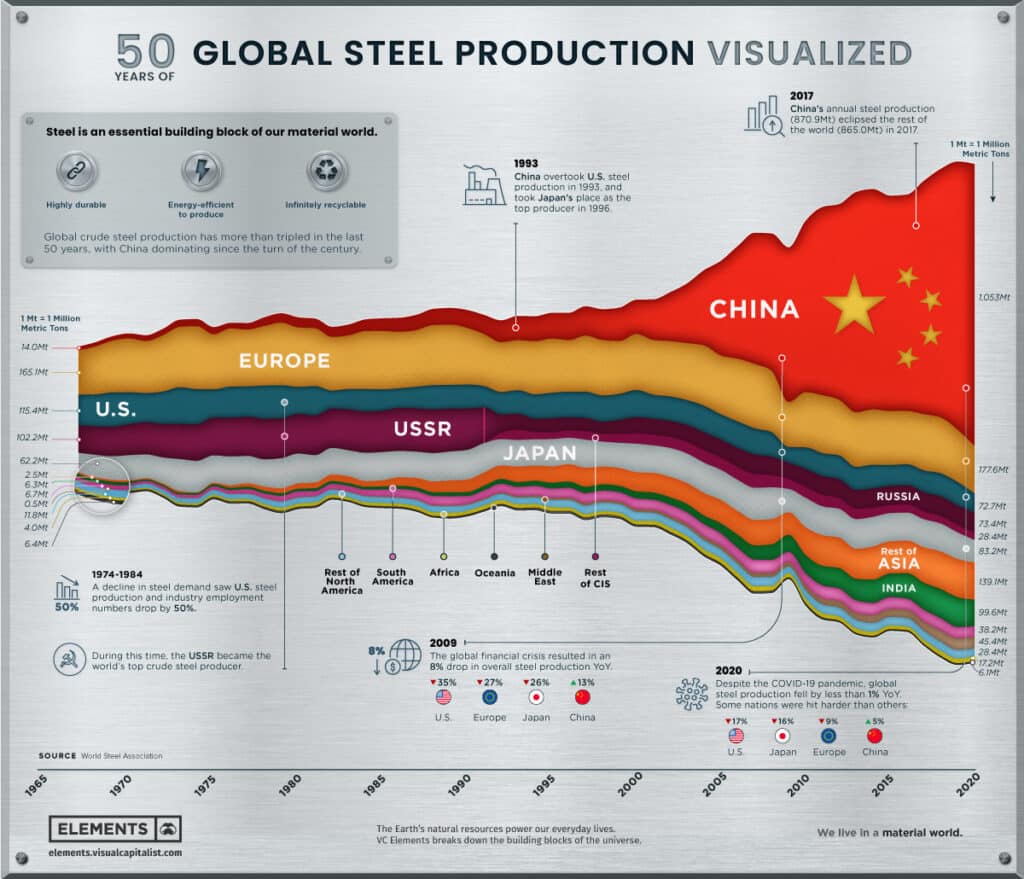
Image by Visual Capitalist
With this little history background, let’s have a look at steel as producer of greenhouse gas emissions and efforts to change the climate impact.
CO2 Emissions in Steel Production
To better understand the impact of steel making on climate change, it is worth having a look at how steel is made today. Steel is basically iron with added carbon to increase durability. Iron is easy enough to find on earth, but it is mixed with other elements. Iron binds tightly with oxygen atoms, making Fe2O3 – ferric oxide. Over enough heat, iron loosens it’s grip on the oxygen atoms, forming CO2.
This carbothermal reduction is: Fe2O3 + 3 CO → 2 Fe + 3 CO2.
“Iron is usually found in the form of magnetite (Fe3O4, 72.4% Fe), hematite (Fe2O3, 69.9% Fe), goethite (FeO(OH), 62.9% Fe), limonite (FeO(OH)·n(H2O), 55% Fe) or siderite (FeCO3, 48.2% Fe).“2 This iron ore is used to create pig iron – the main ingredient in steel making.
The chemical process in the blast furnace is: Fe2O3(s) + 3 CO(g) → 2 Fe(s) + 3 CO2(g).
Like cement, steel making requires a huge amount of energy resources to achieve the required temperatures of around 1700°C+ and still heavily relies on coke made from coal (see below).


Steel is being produced via two main processes today: either using an integrated blast furnace(BF)/basic oxygen furnace (BOF) or an electric arc furnace (EAF). While BF and BOF produce steel from iron ore and need coal as a reductant, EAF use steel scrap or direct reduced iron (DRI) as the main raw material. 70% of the global steel produced is done via the BF/BOF process.
Green(er) Steel
There are a lot of different improvements being introduced to the steel making process with a possible positive impact on sustainability. Below is an overview from McKinsey3. The most inspiring method is the the combination of the EAF and DRI process with green hydrogen.
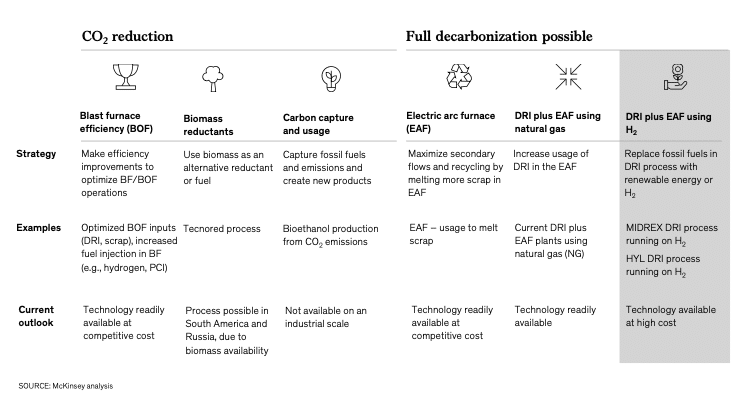
Despite being an abundant element on earth, producing H2 is consuming a lot of energy resources too. Most of the hydrogen available (95%) is “grey hydrogen” produced in a steam methane reforming (SMR) process involving primarily natural gas with steam at a high temperature. “Blue hydrogen” from carbon capture processes and “green hydrogen” from water electrolysis (and the only carbon-neutral technique) are more rare. If you are more interested in the multiple colours of hydrogen, I recommend having a read here.
The challenge of producing green(er) steel with the use of “green hydrogen” is based on cost. The good news: cost is expected to half over the next 10 years.
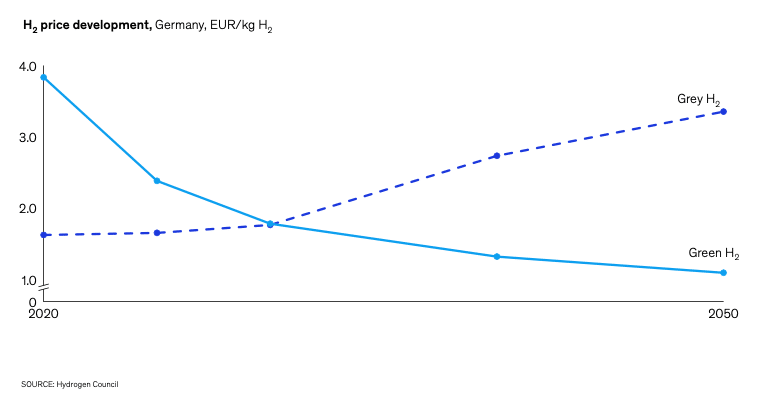
SSAB ZeroTM
SSAB went exactly along these process steps above to reduce their carbon footprint in the steel making process:
“The first step in making SSAB Zero™ is to feed the electric arc furnace (EAF) with scrap. Heat is generated from an electric arc between electrodes. Oxygen is blown into the furnace, and lime and slag foamers are added to combine with the impurities and form slag. Molten iron is extracted and poured out via a tapping spout. Across the entire process, only fossil-free electricity and fuels will be used – resulting in SSAB Zero™ steel as the end-product.“4
If you have read my blog on cement, you will probably immediately discover that the use of lime probably requires further review in the process to ensure this is indeed carbon free. SSAB Zero™ is not 100% carbon free, but close to it:
“SSAB Zero™ has 0.0 kg CO2e emissions per kg/steel from energy used and steelmaking (Scope 1 and 2). The carbon emissions are not completely zero, but so small that we guarantee that they are less than 0.05 kg CO2e emissions per kg/steel, and thus rounded to 0.0. Typical values for iron ore-based steel produced in blast furnaces are 2.0 kg CO2e emissions per kg/steel. Including the raw material (Scope 1, 2 and 3 upstream), the carbon emissions are less than 0.3 kg CO2e emissions, compared with the typical values of 2.4 kg CO2e emissions per kg/steel for iron ore-based steel made in blast furnaces.“
SSAB, LKAB and Vattenfall came together to create HYBRIT as part of this process. Eliminating fossil fuel usage in the process of steelmaking and creating virtually carbon free steel. Putting this type of steel to use in a autonomous electric vehicle (A-VE) puts on an additional benefit. This collaboration of 3 companies is not the only group in Sweden looking to change the carbon footprint of steel though.
H2 Green Steel
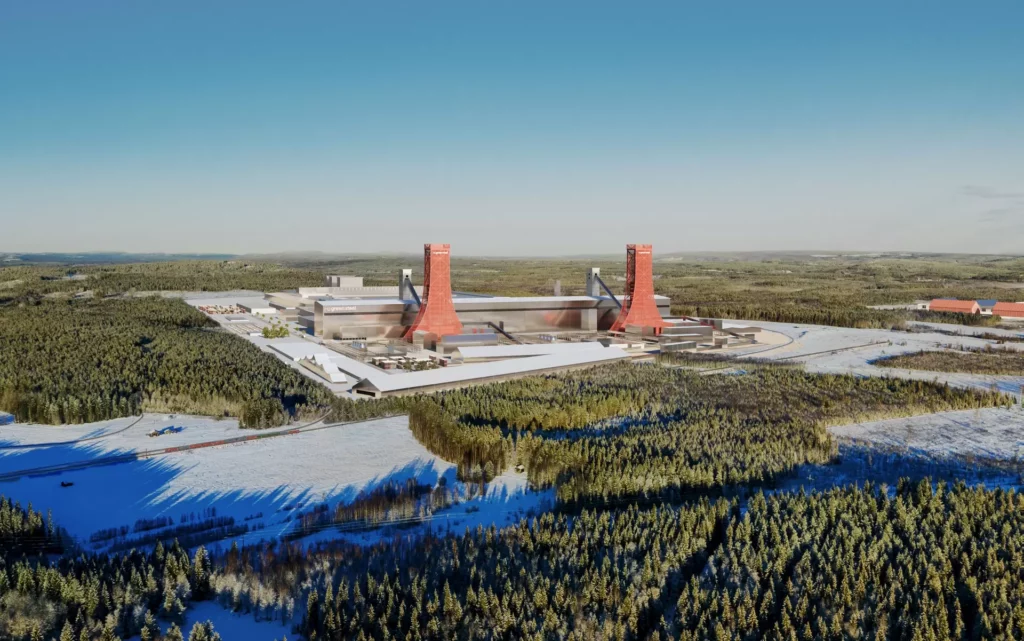
Secured funding of €6.5 billion for their green steel plant in Boden (Sweden) makes H2 Green Steel one of the largest funded startups of 2023. It is no coincidence that the location for H2 Green Steel is in Sweden, if you have a look at the history of iron and steel. The location in Boden features both a hydrogen plant as well as a steel plant for industrial quantity production by 2030 and 2.5 million metric tons of steel by 2026.
The pairing of both hydrogen and steel production are going the be an interesting game changer for steel production by H2 Green Steel. If the changes to European emission markets in the future will allow for a 20%-30% premium on steel will have to be seen.
James Temple at MIT Technology Review has written 2 great articles on steel making, also featuring H2 Green Steel:
Boston Metal and Electra Steel
Similar to Sublime Systems and Brimstone I referenced on cement, Boston Metal and Electra Steel are trying to change the process of steel making entirely. Instead of the blast furnace, Boston Metal has developed something closer to a battery. In the Motel Oxide Electrolysis (MOE) process, it uses electricity to process raw iron ore. The main benefit is the possible usage of low quality iron ore in the process. A huge opportunity for markets without access to the higher quality iron ore mines. Electra Steel follows a similar process at the temperature of a coffee (60°C).
It will be interesting to see, if both companies will be able to achieve industry level production quantities before 2026.
Please visit the below sites, if you want to have a closer look at green(er) steel:
Plastics, Ammonia
I hope this little excursion into steel making gave you some insights on 4 exciting projects in the making. What is left for me is a look across plastics and ammonia in my upcoming parts of this series.
From changes in plastic material production “Advancing material innovation to address the polymer waste crisis” to the overall efforts to clean up the plastic we discard.
Images of sea turtles eating plastic bags make me focus heavily on reducing my personal impact.
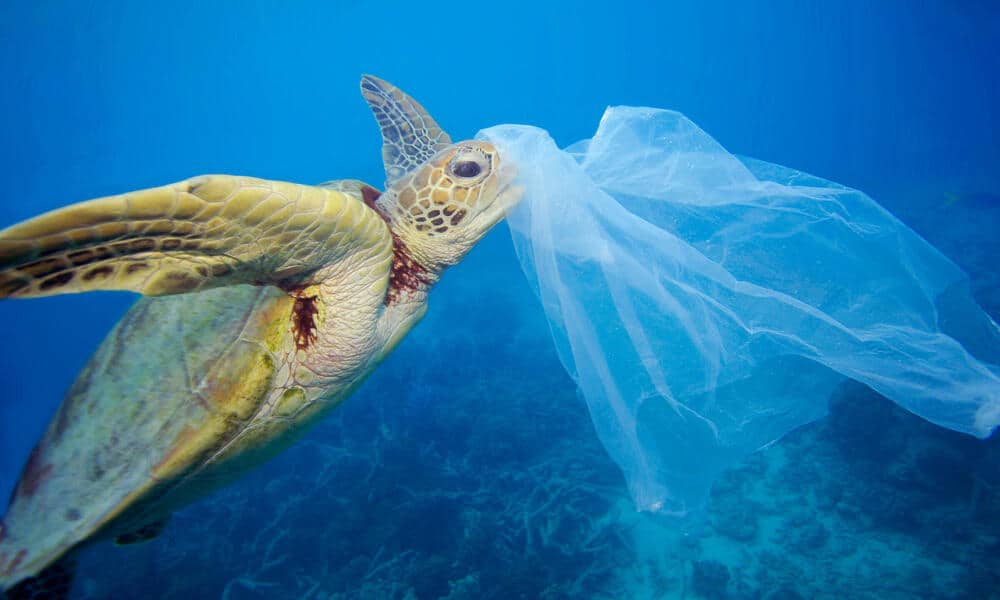
In the meantime I want to recommend Vaclav Smil’s book on iron and steel in the modern world:

“Still the Iron Age: Iron and Steel in the Modern World” by Vaclav Smil
This book offers an insightful exploration into the pivotal role of iron and steel in shaping the modern era. Smil elucidates the historical significance and technological advancements of these materials, highlighting their indispensable contributions to infrastructure, transportation, and industry. Through a blend of historical context and technical analysis, the book presents a compelling narrative of how iron and steel have sustained their relevance and continue to underpin the foundation of contemporary civilization, while also addressing the environmental challenges posed by their production and use. (Summary by ChatGPT 4).

